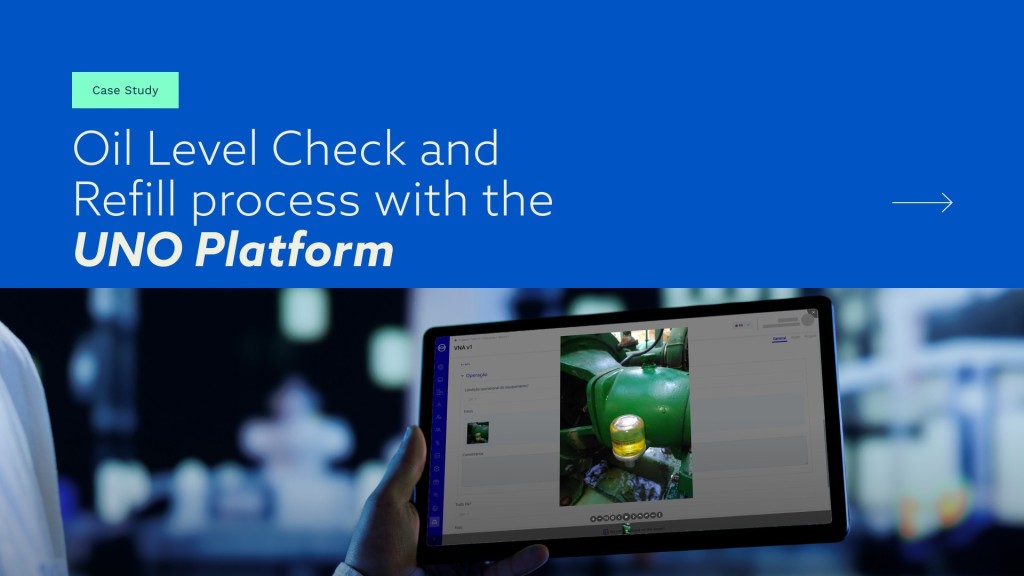
Oil Level Check and Refill (OLCR) is a process that ensures the efficiency and safety of industrial machinery. Correct management of this process reduces breakdowns and improves the traceability of maintenance activities.
The UNO platform is a digital solution for monitoring and optimizing all stages of OLCR, from planning to the resolution of non-conformities. This white paper explores the use of the platform in this context, detailing its functionalities and benefits.
Oil Level Check and Refill process
OLCR involves two crucial steps for the proper maintenance of industrial equipment:
- Oil Level Check
- Refill, when necessary.
The execution of these steps depends on proper planning, complete records and traceability. In industrial environments, where maintenance control is vital, it is essential that each stage is well documented and monitored is essential to avoid failures and optimize machine performance.
The Role of UNO Platform
UNO digitalizes and structures the entire OLCR process through various interconnected modules. Its main features include:
Workflow Planning and Management
UNO allows OLRC to be programmed, ensuring systematic inspections, and makes it easy to customize workflows to meet the specific needs of each industry. The platform also supports the creation and customization of work plans, ensuring the efficiency and organization of the process.
In addition, machine-to-machine (M2M) communications can be used as a data source for when the activity should be performed. Integration with operations planning is essential to ensure minimal production disruption based on the company’s acceptable level of risk.
Digital Recording and Traceability
By linking the shop floor with management requirements, we create standard communication and we are able to retrieve all records from who did it, when, photos, documents, using a fail-safe method using smart tags (nfc and/or qr codes).
UNO is fully auditable and ensures asset lifetime analysis.
Identification and Management of Nonconformities
During the oil level check and replenishment process, any non-conformities or gaps identified are automatically highlighted in the GAP analysis module.
The entire process of correcting the gaps or non-conformities (action plan) is managed in UNO and can be integrated with other IT systems.
Case Study: Application of OLCR
This study demonstrates how the UNO Platform optimizes the Oil Level Check and Refill process by following four essential steps:
- Definition of workflows and scheduling checks.
- Digital recording of inspections, ensuring traceability.
- Identification of malfunctions and recording in the GAP Analysis module.
- Definition and implementation of solutions through the Action Plan module.
With this approach, UNO guarantees a structured and efficient process, reducing operational risks and increasing the life cycle of equipment.
Benefits of Using the UNO Platform in OLCR
The implementation of UNO in OLCR monitoring brings several benefits, including:
- Greater operational efficiency: Reducing errors and optimizing processes.
- Digitization and automation: Digital recording and complete traceability.
- Improved management of non-conformities: Quick detection of faults and elaboration of effective action plans.
- Increased safety and compliance: Ensures that all steps are documented and meet regulatory standards.
Conclusion
Using the UNO platform to monitor OLCR represents a significant step forward in industrial maintenance management. The digitization of the process, combined with traceability and efficient non-conformity management, helps to improve operational performance and equipment safety.
By integrating all stages of OLCR, UNO enables a more effective and structured approach, ensuring that each inspection is accurately documented and followed up. Companies can thus optimize their maintenance processes and ensure greater reliability in their industrial operations.
